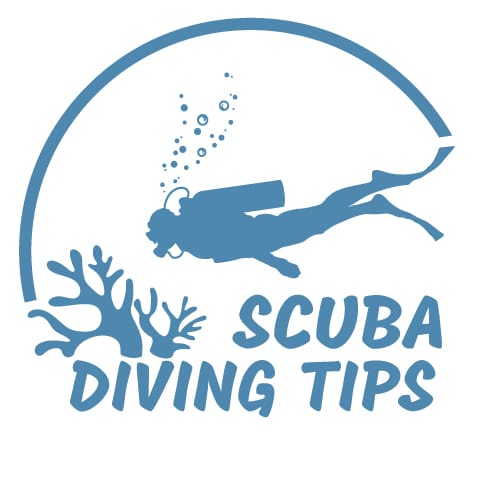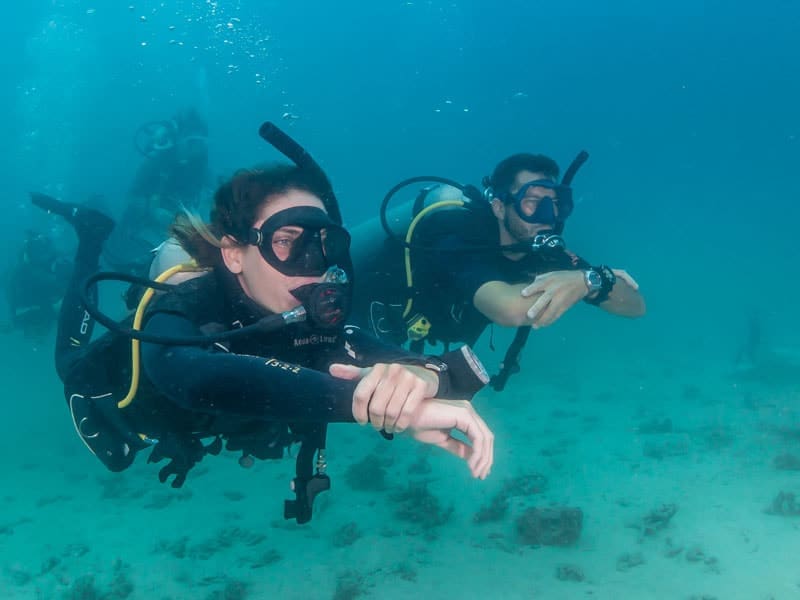PADI Divemaster Knowledge Review Chapter 4 Questions are explained on this page to help you understand the PADI Divemaster Knowledge Review Chapter 4 Answers.
Here I will explain all the PADI Divemaster Knowledge Review Chapter 4 Answers to help you understand all Divemaster Theory in the course. Please make sure you review this later with your PADI Instructor.

Question 1 – PADI Divemaster Knowledge Review Chapter 4 Answers
Question 1: What is the main objective of managing risks?
The goal is to minimize hazards and ensure diver safety by identifying and mitigating risks proactively.
Risk management involves recognizing potential problems before they occur and taking steps to avoid them. For example, in diving, this could mean conducting thorough pre-dive briefings, checking equipment, and monitoring environmental conditions. By planning ahead, you reduce the likelihood of accidents and create a safer experience for everyone.
Question 2 – PADI Divemaster Knowledge Review Chapter 4 Answers
Question 2: Define the expectation for professional responsibility and its legal implications.
Professionals must act as a reasonable and prudent individual would under similar circumstances to protect others from harm. Negligence—failing to meet this standard—can result in lawsuits or penalties.
This principle, often called a “duty of care,” ensures that professionals are held accountable for maintaining safety. For instance, if a dive leader skips essential safety checks and an accident occurs, they could be legally responsible for damages because their behavior fell below the expected standard.
Question 3 – PADI Divemaster Knowledge Review Chapter 4 Answers
Question 3: In a legal case, how would a professional’s typical behavior affect the outcome if they made a mistake?
Correct Answer: b. Courts focus on what occurred, not on intentions.
Courts evaluate actions based on whether they met the standard of care, not the professional’s intent. Even if someone meant well but failed to follow protocols, they could still be liable. For example, intending to help but improperly handling an emergency could lead to legal consequences.
Question 4 – PADI Divemaster Knowledge Review Chapter 4 Answers
Question 4: How does neglecting personal fitness, knowledge, or safety practices impact risk?
Correct Answer: d. All of the above.
A professional’s fitness, knowledge, and adherence to safety practices directly affect not only their own safety but also the safety of others. For example, if a dive leader is physically unfit, they may be unable to assist a struggling diver effectively, putting both lives at risk.
Question 5 – PADI Divemaster Knowledge Review Chapter 4 Answers
Question 5: Can physical stress from diving lead to serious health events in predisposed individuals?
True. Diving places stress on the cardiovascular system, especially during deep or strenuous dives. For individuals with preexisting conditions, such as heart disease, this stress can trigger severe events like heart attacks or strokes. Pre-dive health screenings and awareness of personal limits are critical.
Question 6 – PADI Divemaster Knowledge Review Chapter 4 Answers
Question 6: What is the first and most effective way to reduce risks in professional activities?
Preventing incidents by following established guidelines. Prevention is the cornerstone of risk management. For example, ensuring all divers have properly functioning equipment before a dive can eliminate potential hazards. Adhering to established procedures reduces the likelihood of accidents and ensures accountability.
Question 7 – PADI Divemaster Knowledge Review Chapter 4 Answers
Question 7: Does following established safety standards reduce legal risks?
True. In-Depth Explanation: Compliance with safety standards demonstrates professionalism and reduces liability. For instance, if an accident occurs despite following all guidelines, courts are more likely to view the professional as having acted responsibly, reducing the likelihood of legal consequences.
Question 8 – PADI Divemaster Knowledge Review Chapter 4 Answers
Question 8: How should you approach local industry regulations alongside global standards?
Correct Answer: a. Follow local regulations conservatively, along with PADI standards.
Local regulations are tailored to specific conditions, such as tides, marine life, or environmental factors. Combining these with PADI standards ensures comprehensive risk management. For instance, if local regulations restrict certain dive sites due to strong currents, following these rules ensures safety.
Question 9 – PADI Divemaster Knowledge Review Chapter 4 Answers
Question 9: Is following PADI standards enough to defend your actions during an incident?
False. While PADI standards provide a foundation, situational judgment and adaptation to local conditions are equally important. For example, a dive leader might need to modify plans based on unexpected weather changes, even if global guidelines don’t specify such adjustments.
Question 10 – PADI Divemaster Knowledge Review Chapter 4 Answers
Question 10: What is the best decision when environmental conditions make diving challenging?
Correct Answer: c. Restrict the dive to shallower depths with better conditions.
Adjusting to conditions prioritizes safety. For example, if a thermocline reduces visibility at deeper depths, limiting the dive to shallower areas ensures participants remain safe and comfortable.
Question 11 – PADI Divemaster Knowledge Review Chapter 4 Answers
Question 11: How should you apply PADI standards in various situations?
Understand the intent behind standards and adapt cautiously.
PADI standards are not one-size-fits-all; they require thoughtful application and conservative judgement. For instance, if a standard recommends a specific entry technique but local conditions make it unsafe, adapting the approach while maintaining the standard’s intent (safety) is critical.
Question 12 – PADI Divemaster Knowledge Review Chapter 4 Answers
Question 12: Are PADI Member Code of Practice and the Youth Leader’s Commitment optional suggestions or mandatory?
Answer: b. They are mandatory.
PADI Member Code of Practice and Youth Leader’s Commitment set the baseline for professional behavior and must be adhered to. You will find an in-depth explanation in the PADI Instructor Manual.
Question 13 – PADI Divemaster Knowledge Review Chapter 4 Answers
Question 13: The main role of Paperwork for PADI courses and programs is to inform them of potential risks in scuba diving.
True. Documentation ensures participants understand risks, agree to them, and verify their fitness for scuba diving.
Well-maintained documentation, such as liability waivers and PADI medical forms, protects both participants and professionals. It ensures everyone is informed and provides evidence that proper protocols were followed.
Question 14 – PADI Divemaster Knowledge Review Chapter 4 Answers
Question 14: What steps should be taken if a participant indicates a health concern on a PADI medical form?
Correct Answer: a. Require physician approval.
Medical concerns must be evaluated by a physician to avoid risks. For example, a participant with a history of asthma needs a doctor’s clearance to ensure they can scuba dive.
Important: Never make medical decisions as a PADI Divemaster. You should always advice them to seek medical advice from a licensed Physician if they have a health concern.
Question 15 – PADI Divemaster Knowledge Review Chapter 4 Answers
Question 15: What is the likely effect of offering opinions based on experience and not actually being present during an accident?
Correct Answer: b. Could confuse the situation due to lack of observed facts.
Opinions not based on direct observation can mislead investigations. For example, speculating that a diver panicked without evidence might distract from identifying the actual cause.
Question 16 – PADI Divemaster Knowledge Review Chapter 4 Answers
Question 16: Are you required to report violations of PADI standards you witness?
False. You need to report any PADI Standards violations that you observe, but not any hearsay breaches of standards.







